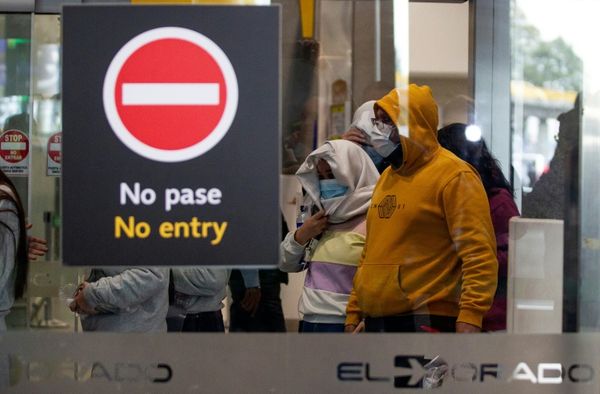
A week has passed since Delhi’s air pollution peaked to an extent that the Supreme Court had to intervene and reprimand the centre and the AAP government over the worsening situation.
“When hearings on the issue started, there was a certain AQI. If as many efforts as you are claiming have been made, then why is pollution increasing?” Chief Justice of India NV Ramana had asked solicitor general Tushar Mehta. “That is the simple question a layman will ask. So many arguments by lawyers and so many government claims. But why is pollution increasing?”
Since then, both the centre and the Delhi governments were expected to step up efforts to tackle the issue. Flying squads were constituted to inspect air pollution norms, educational institutions were closed, and an “enforcement task force” was put in place.
But did it make a difference?
Newslaundry analysed Delhi’s air quality between December 5 and December 10, during which Delhi’s AQI oscillated between “poor” and “very poor” – an improvement from the previous week, where Delhi’s AQI was “severe”.
Steps undertaken to reign in toxic AQI
An AQI between zero and 50 is considered “good”; 51-100 “satisfactory”; 101-200 “moderate”; 201-300 “poor”; 301-400 “very poor”; and 401-500 “severe”.
On December 6, for instance, the AQI in Delhi stayed at 322, or “very poor”, according to data from 30 monitoring stations. It gradually improved to “poor” over the next few days.
This was aided in part by favourable wind speeds dispersing pollutants in the capital. For example, the local wind speed increased to 16 kmph on December 7 and moderate wind speed over the next four days improved ventilation, according to data from SAFAR, an air quality forecast agency under the ministry of earth sciences.

Notably, the Delhi Metro Rail Corporation, or DMRC, pitched in to combat air pollution at the sites where it is constructing infrastructure for the metro rails by using 14 “anti smog” guns. These guns periodically emit fine mist up to 70-100 metres to check dust from construction work. According to Economic Times, one gun is “considered adequate” to cover an area of 20,000 square metres.
Over the past week, the centre’s “flying squads”, constituted by the Commission for Air Quality Management, or CAQM, also inspected 576 sites, identifying 111 units for “immediate closure”. These units included 28 industrial sites, 42 construction and demolition sites, and 41 sites that used diesel generator sets. Thirty of these sites were in Delhi, 23 in Haryana, 43 in Uttar Pradesh, and 15 in Rajasthan – all under the national capital region.
There was also a significant improvement in implementing checks on polluting vehicles in the previous week, as indicated by this report in the Hindu.
Interestingly, as compared to last week, when the Kejriwal government took out full-page ads with its “popularity slogan” of “Red Light On, Gaadi Off” in the Delhi editions of Indian Express, Hindustan Times, Hindustan and Amar Ujala, this week no ads were seen.
The need for joint effort
While an improvement in the AQI sounds good on paper, Nivit Kumar Yadav, programme director (industrial pollution) at Delhi’s Centre for Science and Environment, pointed out the improvement stemmed from a weather pattern. In the coming weeks, he added, the strong wind speeds and rain will contribute to the further refinement in air quality.
Yadav described it as an effort to “show off” to the Supreme Court.
“Despite Delhi's air commission calling a ban on construction, Central Vista construction was going on in full swing,” he told Newslaundry. “The government or the central pollution board should detect the major source of pollution. In a report by the Centre for Science and Environment, which identified the major hotspots in Delhi-NCR, we found that coal is a major source of pollution.”
He added that industries in the capital are still dependent on dirty fuel, instead of switching from coal to cleaner gas.
“Everyone is talking about thermal power plants. But tell me, how many are talking about small-scale industries using small boilers that are dependent on coal as a fuel?” he asked. “There is no pressure from the pollution control board to push them to switch to gas, so who is going to monitor them?”
He added: “Efforts have to be practical. These things are being done to show the apex court they are doing something. Unfortunately, what's happening in Delhi is politics.”
There are approximately 3,500 brick kilns per sector in Delhi-NCR, Yadav said, and only a few have been permitted to operate in accordance with the National Green Tribunal’s order, issued in February this year. The order mandates that only a limited number of brick kilns using zig-zag technology be operated in the national capital between March and June. In cases of severe conditions, they will be banned from running.
A bench headed by NGT chairperson Adarsh Kumar Goel had said: "Those brick kilns which switch over to PNG will be entitled to operate even beyond months of March to June and even beyond the limited number mentioned, subject to compliance with the law.”
“However, currently, all the brick kilns are operating,” Yadav said. “There are more than 50 sectors around Delhi using coal as a fuel. The state pollution control board is not even obeying what NGT has asked them to do.”
It should also be noted that other much-touted schemes, such as the installation of smog towers, might not have had much impact. In October, for instance, the AAP government said a smog tower can clean upto 80 percent of polluted air. But two months later, the reduction in pollution was only 34-43 percent, the Hindu reported, according to six readings between November 30 and December 1.
Another smog tower is located in Delhi’s Anand Vihar, but the AQI at 4 pm on December 10 was 385, well into the “very poor” category. In fact, except for December 7 and 8, the AQI remained “very poor” in Anand Vihar.
Yadav stressed upon the need for a joint effort by Delhi and its adjoining areas to help bend the pollution curve.
“In Faridabad’s Naharpark area, all roads are broken. There is soil everywhere, water is spraying Delhi's roads,” he said. “You are not going to improve the air quality. If Delhi's air quality has to improve, the same has to happen in Faridabad, Noida, Greater Noida, Palwal, Gurgaon, Jhajjar, and Panipat.”
Also Read: TV Newsance 155: Pollution in news studios, Modi repeals three farm laws
Newslaundry is a reader-supported, ad-free, independent news outlet based out of New Delhi. Support their journalism, here.







